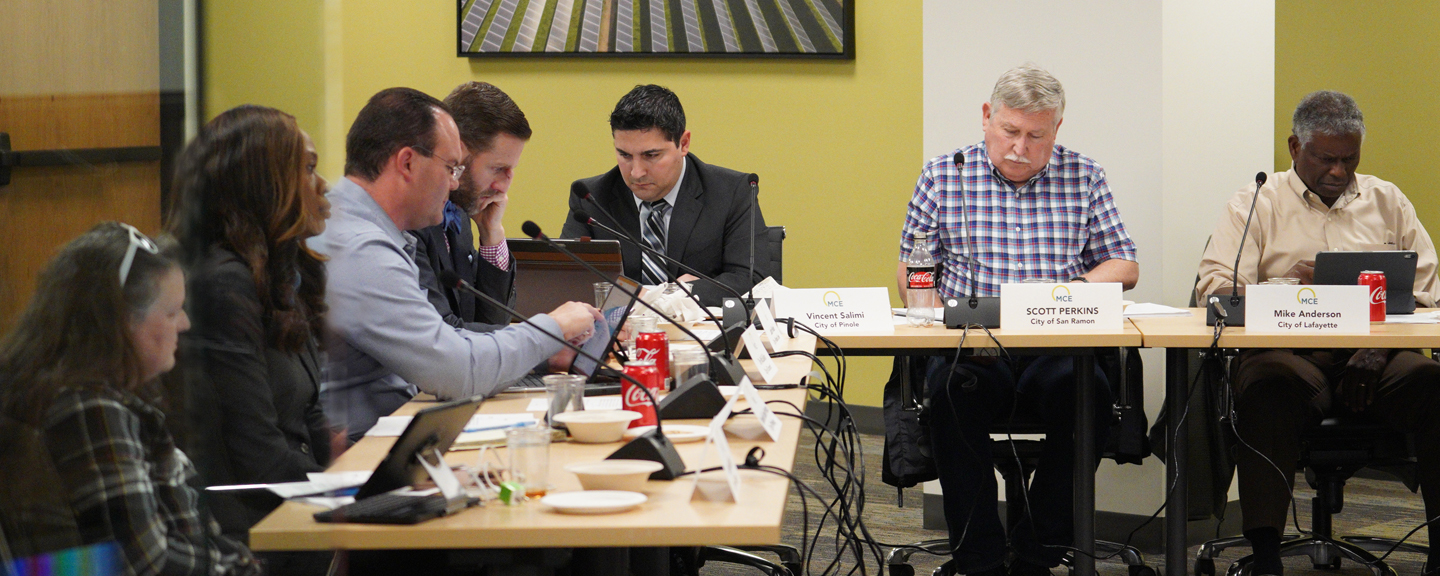On April 2, 2020, MCE’s Board of Directors adopted a new set of principles known as the “Principles of Preferred Resources for Microgrid Development Related to Public Safety Power Shutoffs.” While project development guidelines exist for the development of “behind-the-meter,” or customer-side microgrids, there is little guidance around the process for developing community-scale or “front-of-the-meter” microgrids. Many stakeholders are currently involved in developing these guidelines for more complex community-scale microgrid projects that involve many participants and a variety of generation and storage technologies.
Communities and policymakers must act swiftly to develop community-scale microgrids and improve resiliency in the face of Public Safety Power Shutoff (PSPS) events. California must not commit to permanent resources from microgrid development that will slow or reverse progress toward state greenhouse gas reduction goals. MCE’s new Principles suggest guidelines for development of microgrid systems in our service area that will provide the most benefit to customers, while considering long-term cost and environmental impacts. These policies can be summarized as follows:
- Before microgrids are considered, PG&E should focus first on wires solutions including, but not limited to grid hardening, reclosers and Supervisory Control and Data Acquisition (SCADA), targeted undergrounding, vegetation management, and updating interconnection policies to expedite distributed energy resource solutions.
- Fossil-fueled backup generation must be used for less than three years, as PG&E’s wire upgrade efforts should reduce the need for additional generation. PG&E must be required to focus on clean microgrid generation projects for longer term solutions.
- Microgrid development should follow the State’s loading order – focus first on demand response and energy efficiency opportunities, then utilize Renewable Portfolio Standard (RPS) – eligible generation, increase adoption of batteries and other forms of storage, and deploy Combined Heat & Power (CHP) systems that capture all waste heat, while local gas usage is offset with biomethane. Natural gas generation should be considered only as a last resort, prioritizing biomethane.
- PG&E must exercise full transparency in disclosing the costs and emissions of any microgrid and resiliency activities to all stakeholders before spending ratepayer dollars.
- PG&E must work collaboratively with MCE by not taking any action that overrides MCE’s exclusive authority to secure electric generation on behalf of our customers. MCE must approve any permanent generation sites, as well as technologies, charges, and tariffs that will impact MCE customers.
- As the need for MCE’s investments in resiliency is due largely to PG&E’s mismanagement of its grid, PG&E should provide funds to support local resiliency projects, including those led by CCAs.
For the complete language of MCE’s “Principles of Preferred Resources for Microgrid Development Related to Public Safety Power Shutoffs”, please view the document here.






